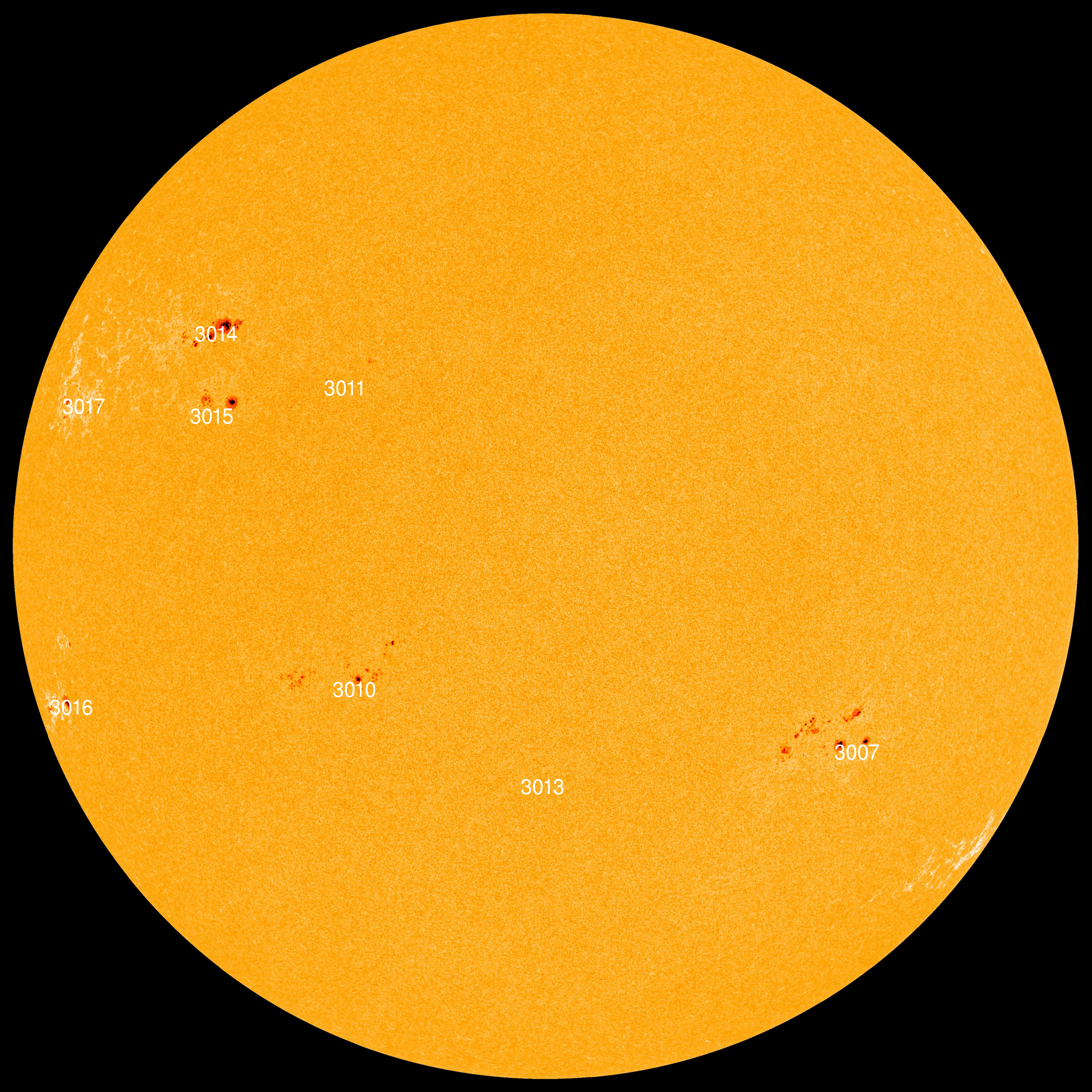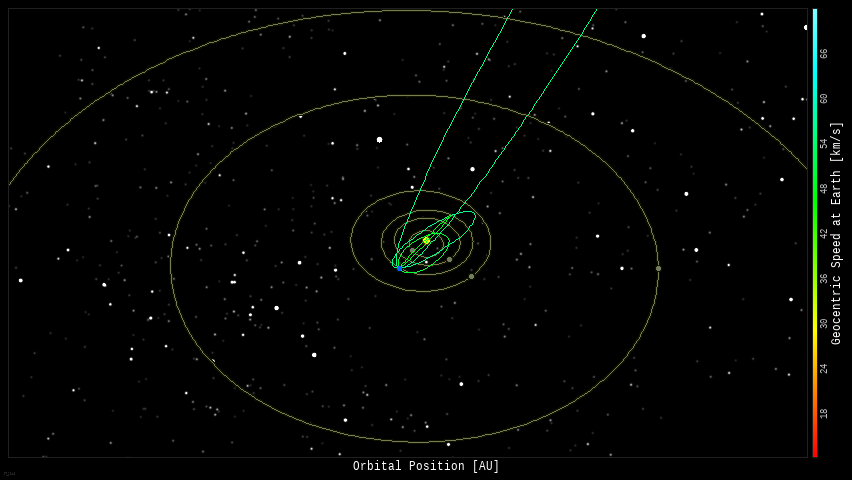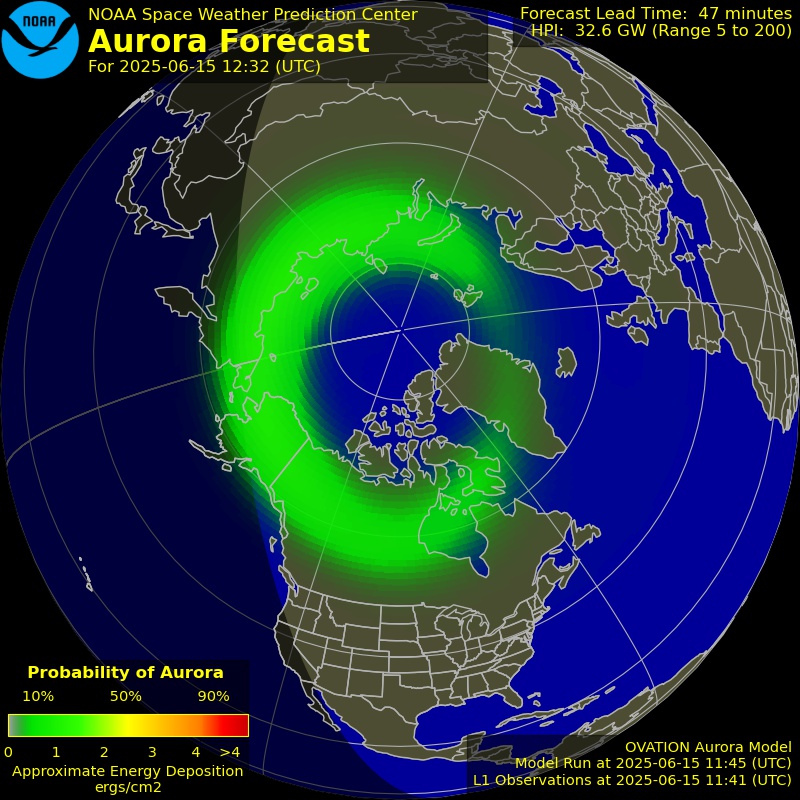Space is big, really big!
Working on M16 for today’s post, I was simply astounded at the size of the Pillars of Creation, which are small compared to the size of M16 as a whole. And then I thought about M16 being thousands of light years away! Every once in a while, the size of space creeps up on me and thwocks me in the back of the head – for a moment there, I was literally reeling.
Disappointment with figures one previously looked up to
Let’s just say I was a tad disappointed with this tweet:

Venus, Jupiter, Mars and Saturn continue to appear in the southeastern predawn sky all week.

The Moon appears near the star Antares in the southwestern predawn sky on May 17th.

The Moon appears in the constellation Sagittarius in the southern sky during the early morning hours on May 19th.

The Moon appears near Saturn in the southeastern predawn sky on May 22nd.

The Moon appears between Saturn and Mars in the southeastern sky during the early morning hours on May 23rd, and Jupiter will be a bit closer to Mars.


- The Moon is a Waning Gibbous – rising after sunset, visible high in the sky after midnight, and visible to the southwest after sunrise.
- The Third Quarter Moon occurs on May 22nd – rising around midnight, and visible to the south after sunrise.
- After May 22nd, the Moon will be an Waning Crescent – visible low to the east before sunrise.

If you click on the Moon image above, or click this link, you will go to NASA’s Moon Phase and Libration, 2022 page – it will show you what the Moon looks like right now. If you click the image on that page, you will download a high-rez TIFF image annotated with the names of prominent features – helpful for logging your lunar observations!
Moon News
Did YOU see the total lunar eclipse? I saw thunderstorms in Michigan…

Eight named sunspots on the Sun’s face – a couple are patchy and distributed, and a couple are large and more concentrated.
Spaceweather.com says “Today, there are 8 sunspot groups on the solar disk–the most in years. Get ready for two more. NASA’s STEREO-A spacecraft is monitoring a pair of extreme ultraviolet hotspots behind the sun’s eastern limb. It is probably the glow of two more sunspot groups. The active regions will rotate into view by mid-week.”

Videos courtesy of NASA/SDO and the AIA, EVE, and HMI science teams.
You can view the Sun in near real-time, in multiple frequencies here: SDO-The Sun Now.
You can create your own time-lapse movies of the Sun here: AIA/HMI Browse Data.
You can browse all the SDO images of the Sun from 2010 to the present here: Browse SDO archive.
Amateur Solar Astrophotography
Solar Corona
Solar wind speed is 551.1 km/sec ▲▲ with a density of 8.66 protons/cm3 ▲ at 0646 UT.
Click here to see a near real-time animation of the corona and solar wind from the Solar & Heliospheric Observatory (SOHO).
Sun News:

- Near-Earth Objects (NEOs) discovered this month: 64, this year: 1124 (+24), all time: 29,049 (+26)
- Potentially Hazardous Asteroids (PHAs): 2265 (+3, updated 2022-05-17)
- Total Minor Planets discovered (MPC): 1,193,632 (-446 updated 2022-05-17)
Upcoming Earth-asteroid encounters:
| Asteroid | Date(UT) | Miss Distance | Velocity (km/s) | Diameter (m) |
| 2013 UX | 2022-May-17 | 16.8 LD | 16.3 | 141 |
| 2021 WY | 2022-May-18 | 16.9 LD | 9 | 65 |
| 2022 JQ1 | 2022-May-19 | 11.5 LD | 4.9 | 23 |
| 2022 HD1 | 2022-May-20 | 15.3 LD | 6.8 | 60 |
| 7335 | 2022-May-27 | 10.5 LD | 13.1 | 1078 |
| 2022 JU1 | 2022-May-27 | 15.1 LD | 6.1 | 37 |
| 2022 JY | 2022-May-28 | 15.1 LD | 10.9 | 67 |
| 2021 KO2 | 2022-May-30 | 3.1 LD | 14.8 | 9 |
| 2022 HT2 | 2022-May-30 | 11.9 LD | 15.7 | 224 |
| 2020 DA4 | 2022-Jun-01 | 5.5 LD | 8.9 | 26 |
| 2021 GT2 | 2022-Jun-06 | 9.5 LD | 7.5 | 50 |
| 2018 LU2 | 2022-Jun-09 | 14.8 LD | 10.7 | 16 |
| 2006 XW4 | 2022-Jun-12 | 5.9 LD | 7.3 | 49 |
| 2022 GU6 | 2022-Jun-12 | 3.2 LD | 8.4 | 88 |
| 2015 WP2 | 2022-Jun-26 | 18.5 LD | 11.4 | 3 |
| 2022 JE1 | 2022-Jul-03 | 8.5 LD | 5.6 | 71 |
| 2021 EL4 | 2022-Jul-05 | 19.8 LD | 9.5 | 25 |
| 2015 OQ21 | 2022-Jul-12 | 18.3 LD | 6.6 | 9 |
Asteroid News:

On May 15, 2022, the NASA All Sky Fireball Network reported 16 fireballs!
(16 sporadics)

Fireball News:
If you see a bright meteor or a fireball, please REPORT IT to the American Meteor Society and the International Meteor Organization!

Position of the planets & several spacecraft in the inner solar system on May 17th:

Position of the planets in the middle solar system – May 2022:

Position of the planets in the outer solar system first half of 2022:

Solar System News

See a list of current NASA missions here: https://www.jpl.nasa.gov/missions?mission_status=current

ex·o·plan·et /ˈeksōˌplanət/, noun: a planet orbiting a star other than the Sun.
* Confirmed Planets Discovered by TESS refers to the number planets that have been published in the refereed astronomical literature.
* TESS Project Candidates refers to the total number of transit-like events that appear to be astrophysical in origin, including false positives as identified by the TESS Project.
* TESS Project Candidates Yet To Be Confirmed refers to the number of TESS Project Candidates that have not yet been dispositioned as a Confirmed Planet or False Positive.
Exoplanet News:
May 12, 2022
Nine New Planets
This week’s nine new planets include three more close-in planets in the TOI-500 system, which lends support to the theory that planets form through gentle secular migration instead of highly eccentric migrations. Read the discovery paper by Serrano et al. 2022.
The new planets are TOI-500 c, d, & e, TOI-1696 b, TOI-1710 b, TOI-2136 b, HD 103891 b, HD 105779 b, and HIP 94235 b. Find the new data in the Planetary Systems Table and its companion table, Planetary Systems Composite Parameters.
ExoFOP-K2 Campaign 9 Contributed Data
We’ve migrated the K2 Campaign 9 microlensing data from the Exoplanet Follow-up Observing Program (ExoFOP) site. Executed in 2016, K2C9 was designed to simultaneously observe gravitational microlensing events from space with the Kepler telescope and from Earth with ground-based telescopes to see a parallax effect in the shape and time of the lensing events. The
Read the documentation and access the data set from the ExoFOP-K2 Campaign 9 page. (The Contributed Data page also links to the new page.)
Updated Movies
Two of our animated movies based on our pre-generated plots now include more recent archive data:
- 33 Years of Discoveries shows the number of exoplanet discoveries in mass-period space from 1989 through April 2022.
- Exoplanets: Cumulative Detections by Discovery Year is a histogram showing the cumulative number of exoplanet discoveries by detection method each year from 1989 through April 2022.
You can always find these movies on our Pre-generated Plots page, which also contains data plots of current archive data that are ready for use in presentations and publications. All plots are available in a colorblind-friendly palette as well, and some can be customized further using Filtergraph, a data visualization tool developed at Vanderbilt University.

SpaceWeather.com Realtime Aurora Gallery: https://spaceweathergallery.com/aurora_gallery.html
Latest Aurora Oval Forecast

- Visit an International Dark Sky Park: https://www.darksky.org/our-work/conservation/idsp/parks/
- If you live in Michigan, visit the Michigan Dark Skies site: https://sites.lsa.umich.edu/darkskies/

Print 3D models of NASA spacecraft for #WeekOfMaking2022
Messier Tour: M16 – The Eagle Nebula
Messier 16 (M16), the famous Eagle Nebula, is a star-forming nebula with a young open star cluster located in Serpens. M16 lies near the borders with the constellations Sagittarius and Scutum. The nebula is best known for the Pillars of Creation region, three large pillars of gas famously photographed by Hubble in 1995.
Also known as the Star Queen Nebula, M16 lies at a distance of 7,000* light years from Earth and has an apparent magnitude of 6.0. The cluster’s designation in the New General Catalogue is NGC 6611, while the nebula is referred to as IC 4703. – messier-objects.com
* I found three different distances listed for M16: the messier-objects.com article stated 7000 LY, SpaceEngine said 2146 LY, and Wikipedia said 5700 LY (referencing Gaia DR2 data). I’d be more inclined to trust the Gaia data.

The Eagle Nebula occupies an area 70 by 55 light years in size, or 30 arc minutes of the sky, while the open cluster has a radius of 15 light years, corresponding to 7 arc minutes in angular diameter.
The name Eagle comes from the nebula’s shape, which is said to resemble an eagle with outstretched wings. American astronomer Robert Burnham, Jr. introduced the name Star Queen Nebula because the nebula’s central pillar reminded him of a silhouette of the Star Queen. – messier-objects.com

NASA, ESA/Hubble and the Hubble Heritage Team
Messier 16 is home to several regions of active star formation. These include the famous Pillars of Creation in the central part of the nebula and the Stellar Spire, located just to the left of the pillar structure.
The largest of the three Pillars of Creation is approximately 4 light years high. The Stellar Spire, a large tower of gas that appears to be coming off the region of nebulosity, is about 9.5 light years high, corresponding to a length of 90 trillion kilometres. This is roughly twice the distance from the Sun to the nearest star system, Alpha Centauri. – messier-objects.com
Every once in a while I get reminded how big space is – this is one of those times. The Pillars of Creation are enormous, but they are small part of the much larger Eagle Nebula!
Bob Trembley
Here’s my obligatory “What would a planet look like if it were near that Messier object” pic:

Cover Image: Messier 16. Credit: ESO
Messier Object List: [Link]
Software Apps used for this post:
NASA Eyes on the Solar System: an immersive 3D solar system and space mission simulator – free for the PC /MAC.
Stellarium: a free web-based planetarium app. It’s a great tool for planning observing sessions. Latest update released on April 16, 2022.
SpaceEngine – Explore the universe in 3D and VR! Latest update released on May 16, 2022.
Worldwide Telescope – operated by the American Astronomical Society (AAS). Latest update released on February 15, 2022.





